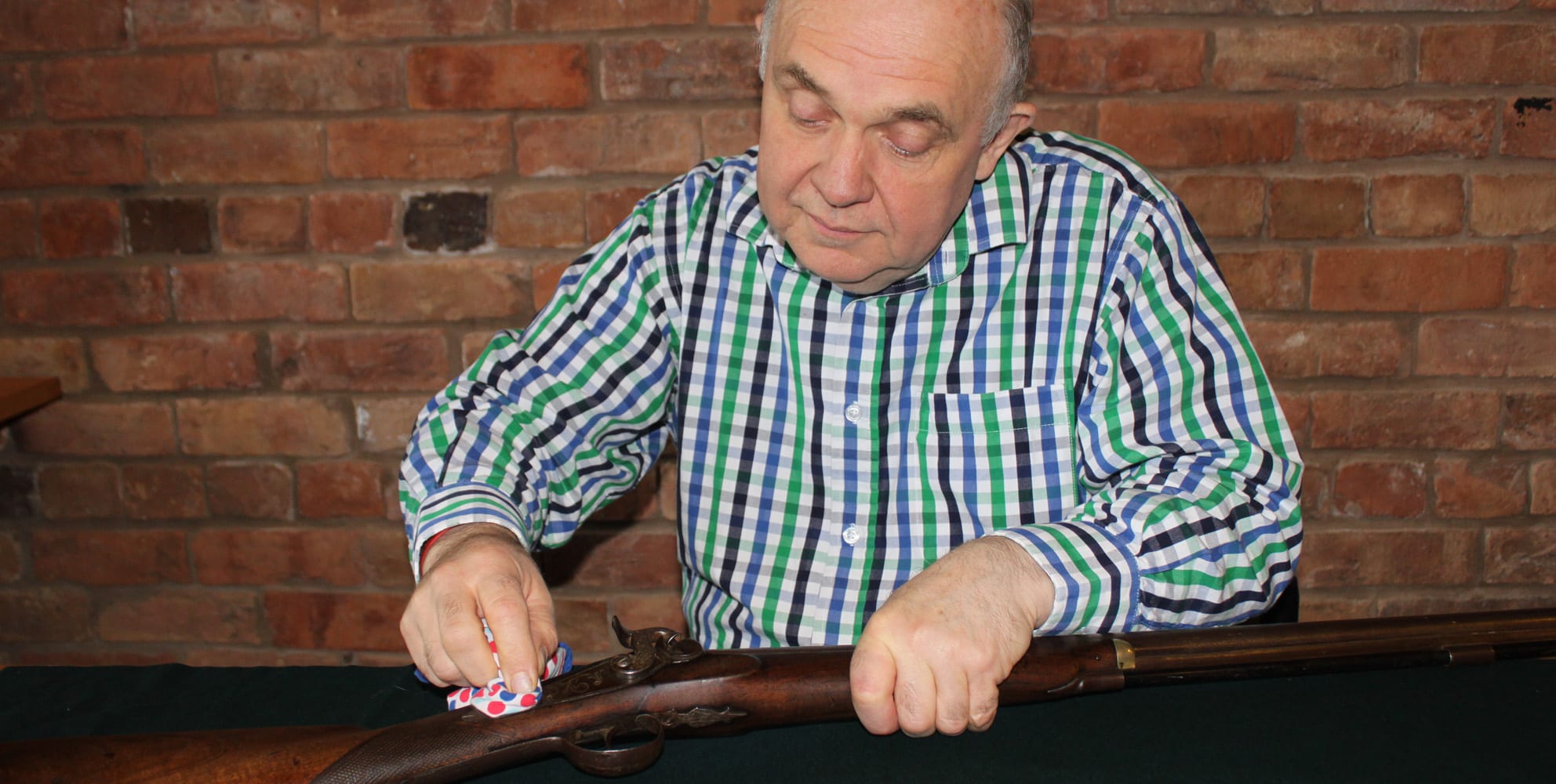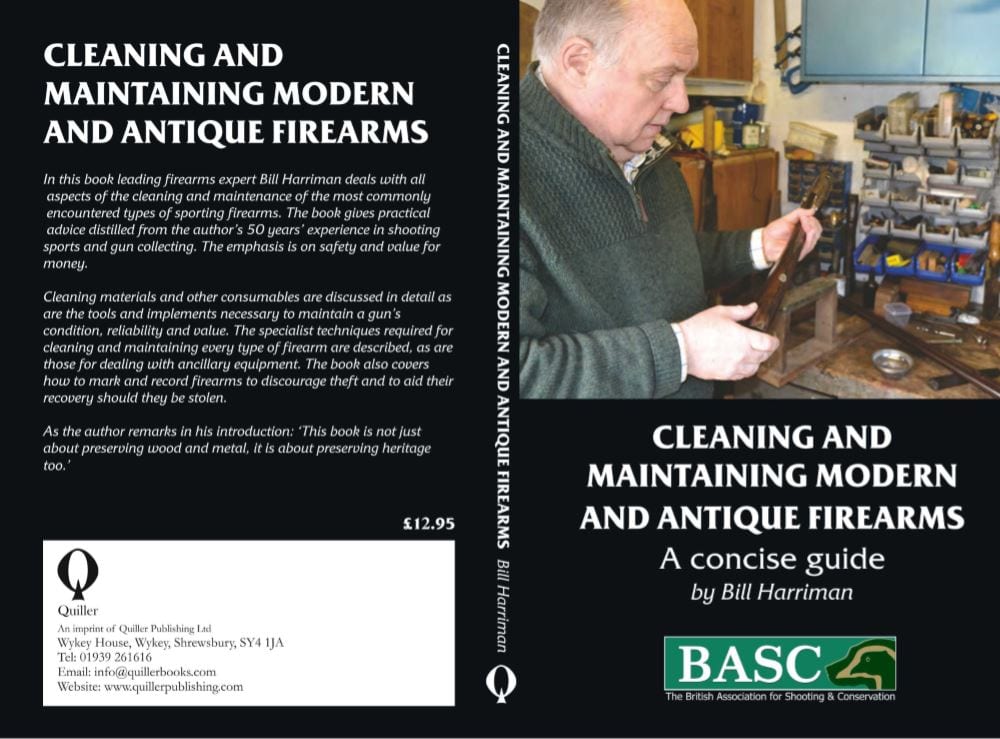Cleaning Shotguns
BASC director of firearms Bill Harriman explains how you can properly begin cleaning your shotgun.
1 Firstly, confirm that the gun is unloaded. Dismantle it into barrels, stock/action and forend, then lay the parts out on several sheets of newspaper or a cleaning mat.
2 Crumple up newspaper into a ball that will pass easily through the barrels. Push the paper ball into the chamber. Follow it with a cleaning rod or length of dowel, place the rod/dowel end on the floor and gently drop the barrels onto it. You should hear a squeaking sound as the paper is pushed up the bores and out of the muzzle. Using the barrel’s weight to push the paper through reduces the risk of breaking the rod by heavy-handedness. This will remove any loose fouling.
3 Next, soak a phosphor-bronze brush with bore solvent and scrub the bores with it to remove any plastic deposits and leading. If these are not deeply ingrained, a couple of passes of the brush on its own will shift them. Plastic wad deposits show up as a grey smear in the bore. When the solvent starts to loosen them they look like grey slime. Of course you can prevent these deposits by using only fibre wads, which is good environmental practice anyway.
4 Push another ball of newspaper through the bores to dry up the solvent and remove anything which it has dislodged. Then, take a patch of the correct size and run that up the bores with the cleaning rod. If you have done your stuff, it should come out with little or no fouling on it. Repeat until the patch comes out clean.
5 Run a cocktail stick along the joint between the ribs and the barrels to dislodge any accumulated dirt which can then be brushed off. If you have a ventilated top rib, use the cocktail stick to pick out dirt from the spaces. Pay particular attention to the extractors and clean under them with a rag. If they can be removed easily, do so and give them a thorough wipe before you reassemble them.
6 If you gun has variable chokes, remove them and soak in petrol. Run a cloth around the threads in the barrel to remove any grit or dirt. Clean the chokes and wipe with either a little graphite grease or petroleum jelly and make sure they are really screwed home properly.
7 Lastly, run a wool mop covered in a little oil through the bores. Do not drench the barrels. Too much oil attracts dust and other minor debris. The outside of the barrels can be wiped with an oily rag. In my opinion, a better alternative is to wipe them with a silicone cloth or coat them with a hard wax polish. Both are very water repellent and leave a hard and shiny surface which does not attract dust.
8 Next take up the stock and action. Wipe the stock with a damp rag or kitchen paper to remove any dried mud. Chequered areas, such as the wrist and butt-plate, should be cleaned with a toothbrush. Wipe the metal with an oily rag or silicone cloth. On a side-by-side, give the well that engages the lump a good picking out with a cocktail stick or stiff-bristled artist’s brush. On an over-and-under gun, make sure the trunnions are carefully wiped to prevent the build-up of dirt or grit.
9 If your gun has disc-set strikers, make sure that the discs have not shaken loose, otherwise the gun will not close properly. Any easy way to do this is to lay a steel ruler on its edge over them. If they are starting to work loose, this will show by the ruler not lying flush with the action. Unless you have a striker wrench, they will have to tightened by a gunsmith.

10 Make sure the cocking arms move freely. Lubricate any moving parts with a drop of oil in the tip of a cocktail stick. Again, do not use too much. If you have a gun with hand-detachable locks, remove them from time to time, give them a brush, lightly oil them and re-install.
11 Give the chequered areas on the forend a brush. Wipe the forend iron with an oily rag and lightly oil any bearing surfaces. Lastly, make sure that all screws are tightened. Put the gun back together again and lock it in your gun cabinet.
12 This procedure applies to any shotgun, but if you use a semi-auto or pump-action, there are a few additions. Always remove the barrel before cleaning your shotgun. This prevents any forgotten cartridge ever reaching the chamber. Remove the bolt and wipe off any fouling. Brush out the interior of the frame. Oil the bolt lightly, making sure that the firing pin is lubricated so that it runs back and forth easily. Reassemble and dry-fire the gun, pointing it in a safe direction. Store with the action closed and the springs at rest. Make sure you reassemble a self-loader correctly; if in doubt look for a manual on the internet or try YouTube.
13 If you have a gas-operated self-loading shotgun (most are), it is important to keep the gas system clean. Check that the gas ports are not fouled by carbon deposit which can prevent self-loading. Once it builds up, it is difficult to shift. Use plenty of bore solvent to dissolve any fouling. A small twist drill (approx 2mm) will help remove really stubborn carbon deposits.
Follow all these steps when cleaning shotguns and you will sure be ready for the next season.
BASC’s firearms department have written a number of useful and interesting blogs. Click the links below to read more from the team:
This article is an abridged excerpt from Bill Harriman’s book, Cleaning and Maintaining Modern and Antique Firearms – A concise guide.
Published by Quiller and available to BASC members at a discounted priced of £12.95

